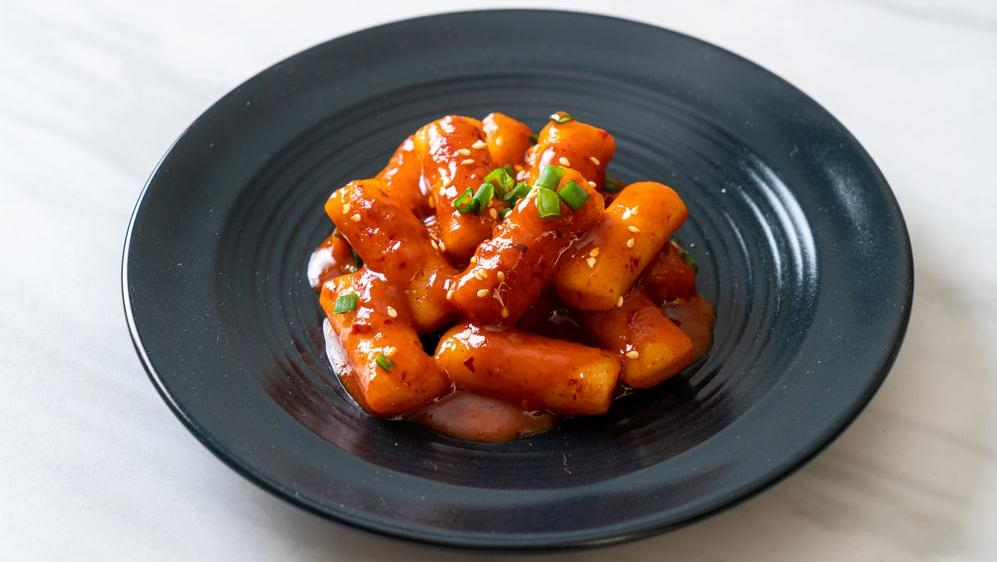The Undisclosed Ingredients Vegans Should Watch Out For On Restaurant Menus
They might not be listed as an element of your entree.
If you're a vegan or vegetarian who dines out a lot, and particularly if you're a vegan or vegetarian in a city like New York or Chicago with a ton of great restaurant options, you probably already know how to avoid the typical landmines of plant-based dining: you ask the server whether the ramen noodles contain egg, for example, or if there's lard in the pie crust. But if you're new to eating out as a vegan, there's one ingredient—or category of ingredients—you might not think to ask about, and it's one that's not always listed on the menu: seafood.
Ingredients like fish sauce, dried anchovies, and shrimp paste add a complex meatiness and depth to dishes like Malaysian curry laksa and Thai green papaya salad. Dried or fermented seafood products are fundamental to many Asian cuisines—but they definitely make it harder to eat out if you're avoiding fish or shellfish.
So, to help you navigate restaurant menus with ease and know what dishes to avoid (or request to be made free of all forms of sea meat), I offer you the following, non-exhaustive list of some of the most common fish and shellfish products you'll find in Asian restaurants in the United States.
Fermented shrimp paste
Pungent, briny fermented shrimp paste goes by a variety of names: there's Filipino bagoong; Malaysian belacan; and Thai kapi, among others. It's typically found in Malaysian dishes like curry laksa; in several varieties of the Southeast Asian condiment sambal; in the Thai noodle dish khao soi; and in dipping sauces like Vietnamese mam tom. It's also often used to season a variety of stir-fried vegetables, such as eggplant or water spinach.
Though perhaps not quite as ubiquitous in the States as fish sauce, it's still something to look out for. While the base for your khao soi or curry laksa might contain shrimp paste to begin with, it's worth checking if there's a vegan option—and if it's just in the dipping sauce for something, it's easy to avoid.
Fish sauce
You probably know this one already. One of the key ingredients in a plate of pad thai—or Vietnamese bun cha, or Burmese tea leaf salad—is fish sauce, which adds an umami backbone and layered saltiness to countless dishes. Much like shrimp paste, it goes by different names in different countries: nam pla in Thai; nuoc mam in Vietnamese; patis in Tagalog; and aekjot in Korean, to name a few.
As I mentioned, it's commonly found in noodle dishes like pad thai, as well as most, if not all, Thai curries. It's one of the things that makes even vegetable-heavy Korean staples like kimchi non-vegan, and it's a component of tangy, spicy dipping sauces like Thai nam jim jaew and Vietnamese nuoc cham. It's used in marinades, dressings, soup bases, and just about anything you could think of. So even if your summer rolls are otherwise vegan, make sure you ask what's in the dipping sauce. You might even be able to ask for an alternative: many Southeast Asian restaurants offer vegan dipping sauces with a base of soy sauce or peanut butter.
Dried shrimp
Tiny, orangey-pink dried shrimp are used in a number of Asian cuisines, though in the States, you're most likely to encounter them in the aforementioned Thai green papaya salad or Burmese tea leaf salad. They're also used alongside Korean fish sauce to make many types of kimchi, and added to a number of regional Chinese dishes like congee and stir-fried cabbage.
Dried anchovies
While fried dried anchovies often play a starring role in Malaysian dishes like nasi lemak or Korean banchan like myeolchi bokkeum, the tiny fish are also commonly used to make stocks and broths for Korean dishes like sundubu jjigae, kimchi jjigae, and tteokbokki.
That makes them a bit harder to avoid, since they're not always listed on the menu. In addition to asking whether an item can be made without fish cakes or fish balls, you might also ask what goes into the stock or sauce.
Oyster sauce
Again, this is probably one you're familiar with. Oyster sauce is a dark, slightly sweet reduction of oyster extracts that is used in dishes like Thai drunken noodles and pad see ew, stir-fried leafy greens (like Chinese broccoli), and in a number of stir fry options.
Katsuobushi (bonito flakes)
You've probably seen videos of tissue paper-thin shavings of katsuobushi, or dried bonito flakes, coming to life as they're sprinkled on top of Japanese street foods like okonomiyaki or takoyaki.
But those flakes aren't just a garnish. They've also been incorporated into the batter itself in the form of dashi, a katsuobushi-based stock that is generally thought to be the foundation of Japanese cuisine. Takoyaki, made with a similar batter, contain dashi as well—as do countless other iconic Japanese dishes, like miso soup. It's a main component of tsuyu, a concentrated sauce used to flavor soups and as the base for dipping sauces. Even tofu-based dishes like agedashi tofu and inarizushi are typically flavored with dashi.
Some Japanese restaurants might offer vegan dashi made with dried kombu (kelp) and/or dried shiitake mushrooms, but it's not very common. However, plenty of Japanese restaurants do offer vegan and vegetarian dishes, particularly in cities like New York or Los Angeles.
Now that you've equipped yourself with the requisite knowledge, you may go forth and feast on sumptuous noodles, stir-fries, and stews. As I said, this list is non-exhaustive, so make sure to do a little bit of research before visiting a restaurant, if you can, to see what fish-free options are available. No one wants to be the customer requesting elaborate special orders.
